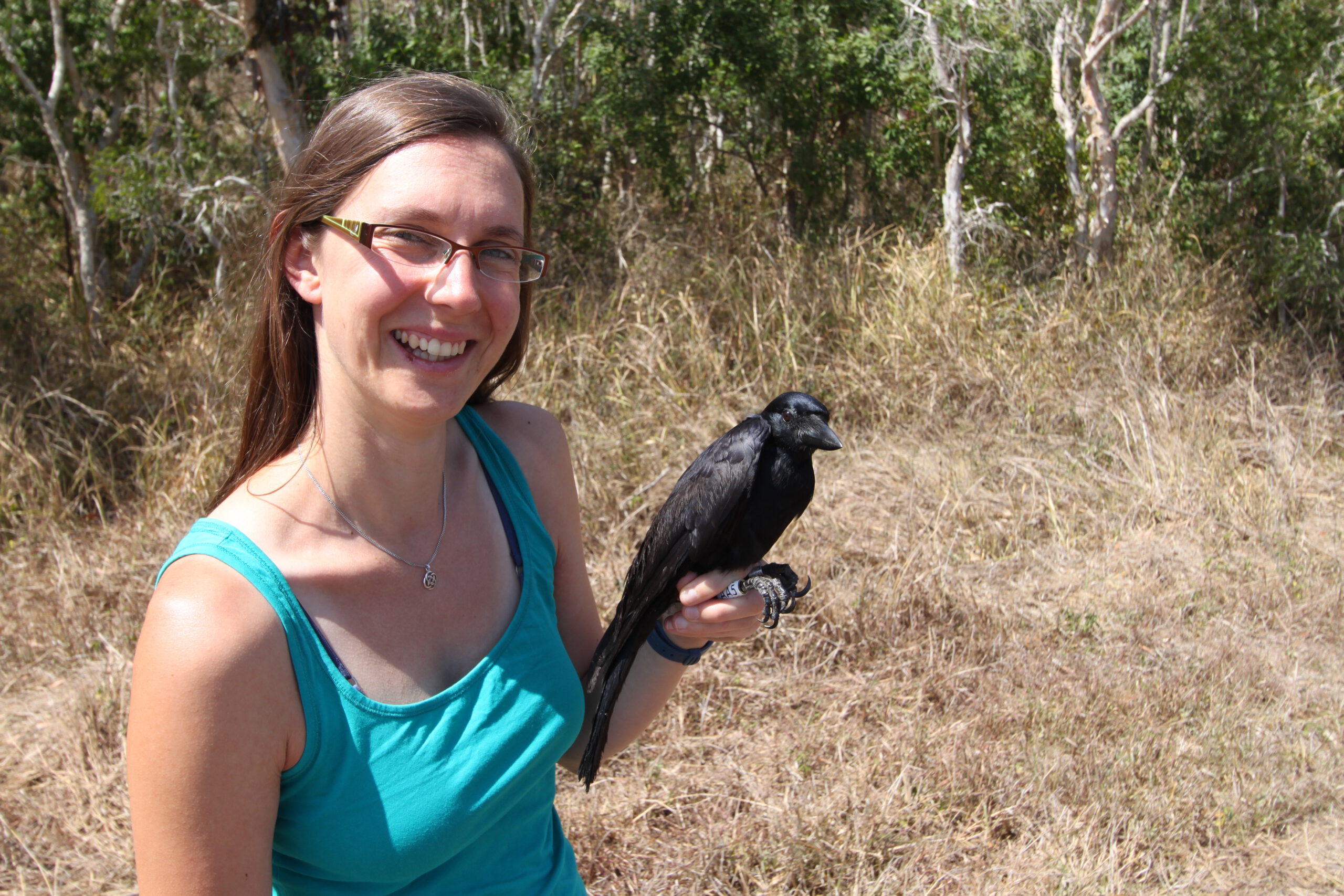Tool Use
M any animal species occasionally use tools, but habitual tool use and manufacture are extremely rare. The New Caledonian crow (Corvus moneduloides) and the ‘Alalā (Corvus hawaiiensis) – corvids endemic to different island groups in the Pacific – show species-wide tool use. For my PhD, I conducted a series of behavioural experiments with wild-caught New Caledonian crows and permanently captive ‘Alalā to investigate sources of variation at different stages of their tool-oriented behaviour.
any animal species occasionally use tools, but habitual tool use and manufacture are extremely rare. The New Caledonian crow (Corvus moneduloides) and the ‘Alalā (Corvus hawaiiensis) – corvids endemic to different island groups in the Pacific – show species-wide tool use. For my PhD, I conducted a series of behavioural experiments with wild-caught New Caledonian crows and permanently captive ‘Alalā to investigate sources of variation at different stages of their tool-oriented behaviour.
In one of the most detailed assessments to date of how non-human animals identify raw materials for tool manufacture, we showed that New Caledonian crows are highly selective in choice trials with multiple plant species and revealed that when presented with experimental leaf-stem combinations, birds can identify their preferred species from its stems alone (read the publication here: Link).
We experimentally linked raw-material properties to aspects of the tool manufacture behaviour (read the publication here: Link) and the morphology of the resulting tools (read the publication here: Link). This work revealed that ecological factors can influence the expression of different tool-making phenotypes in New Caledonian crows, and provided an alternative hypothesis for explaining seemingly ‘cultural’ variation in animal tool behaviour more generally. We showed that New Caledonian crows acquire food several times faster when using hooked rather than non-hooked tools. This implies that small changes to tool shape can strongly affect energy-intake rates, highlighting a powerful driver for technological advancement (read the publication here: Link)
Keeping tools safe for future use can avoid the costs of repeated tool procurement. We showed that tool-placement behaviour in New Caledonian crows is sensitive to the costs and likelihood of dropping tools (read the publication here: Link). In arboreal environments, safekeeping can prevent costly tool losses, removing a potentially important constraint on the evolution of habitual and complex tool use.
One of the big questions in the field of avian tool use was always why the New Caledonian crow, but apparently no other crow species showed species-wide tool use. The New Caledonian crow has an unusually straight bill and lives on an island with no predators and reduced competition for embedded food sources. Conditions that favour the evolution of avian tool use? It seems so! We showed that Hawaiian crows are very dexterous tool users and over 90% of adults spontaneously used tools (read the publication here: Link). Our preliminary data showed that this species has extensive tool modification and manufacture abilities (read the publication here: Link). We have since conducted dedicated experiments to chart the full extent of the species natural tool-making repertoire (watch this space).
